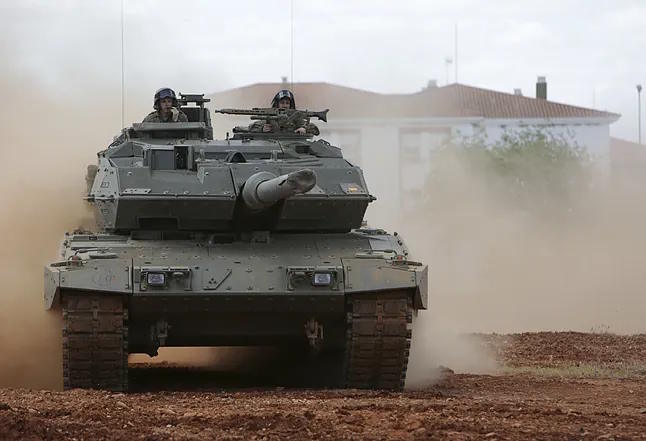The Industrial and Technological Plan for Defense and Security contemplates a record investment of 10,471 million euros in 2025, with the aim of reaching 2% of GDP in Defense spending and growing its industrial and technological muscle. However, only 18.73% of that amount (1,962 million euros) will be directly allocated to the acquisition of defense and deterrence capabilities. The Ministry's main budgetary commitments focus on ammunition, explosives, and wheeled self-propelled howitzers (ATP), which will absorb 44.08% of the total armament budget.
Within the Special Modernization Program (PEM) - resulting from the agreement between the Ministries of Defense and Industry, Trade, and Tourism - the aim is to achieve an adequate operational standard and meet international commitments. The Army will be the major beneficiary, receiving 687 million euros, representing 35.03% of the allocation.
The new phase of Army transformation aims to renew its capabilities. Among the most prominent projects is the development of a new tracked support vehicle, intended to replace the veteran Armored Tracked Transport (TOA), with an investment of 200 million euros. This multipurpose vehicle will enhance the mobility and protection of deployed units.
They will also start, with an investment of 5 million, the development of a superior ground combat system, a project to replace the current Leopard and Leclerc tanks by 2040, marking the beginning of a new generation of armored vehicles.
However, one of the most significant investments, with 300 million, is allocated to the acquisition of a wheeled self-propelled howitzer system, which will replace the current M-109 A5s. This new artillery platform will provide the Army with greater rapid deployment capability and precision in fire. In parallel, they will upgrade 119 units of the combat vehiclePizarro, with an investment of 60 million euros, a modernization that will allow maneuver units to operate more effectively.
The last land investment on the list consists of 72 million for the acquisition of new land reconnaissance and exploration vehicles to enhance the surveillance and tactical information gathering capabilities of the brigades and commands in Ceuta and Melilla.
Naval modernization will gain momentum with an investment of 495 million euros allocated to the Navy. Of this total, almost half - 225 million - will be used for the deep modernization of the Álvaro de Bazán class frigates (F-100), technological gems of the fleet that will see their operational capacity reinforced against the challenges of the current maritime environment.
The frigate F-101 Álvaro de Bazán sailing in the waters near the Naval Base of Rota in 2003J. F. Ferrer
Another major commitment is the generational replacement of the veteran Combat Supply Ship (BAC) Patiño, with over three decades of service, which will be retired. Instead, the construction of a new unit inspired by the model of the BAC Cantabria is planned, which features a double hull to prevent spills in case of accidents.
The Landing Platform Dock (LPD) amphibious assault ships will also undergo a renewal. These platforms, capable of transporting troops, armored vehicles, and operating helicopters from their flight deck, will receive key upgrades to increase their effectiveness in high-demand missions and ensure the highest safety standards through an investment of 100 million euros. This innovation line also includes the design of an amphibious combat vehicle to replace the obsolete AAV-7A1s of the Marine Infantry, within the efficient comprehensive amphibious projection system, with 50 million allocated to its development.
In parallel, 70 million euros will be invested in the acquisition of an Embarked Launcher System, designed to provide state-of-the-art missile defense, enabling Navy ships to counter threats in highly hostile scenarios.
On the other hand, the Air and Space Force will have an allocation of 216 million euros dedicated entirely to the technological development of the New Generation Weapon System (NGWS). This program, driven in collaboration with Germany and France, is part of the ambitious Future Combat Air System (FCAS), which aims to shape the next era of European air superiority. It is expected that future sixth-generation fighters will operate in a network with unmanned drones, opening a new dimension in aerial operations of this century.
